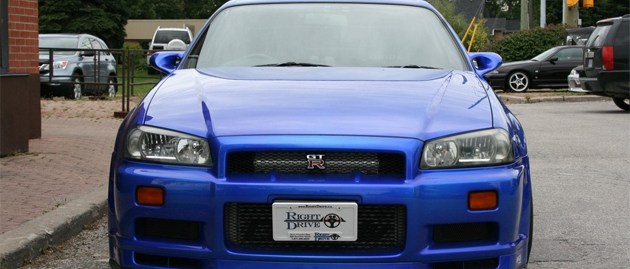It was no secret that the RB26 was able to cope with (substantially) more power but the Japanese gentleman’s agreement prevented Nissan from realising its true potential. Japanese manufacturers had agreed a power cap of 276bhp for domestically produced cars to satisfy the safety concerns put forward by the Japan Automobile Manufacturer’s Association in the late ‘80s.
> Nissan Skyline GT-R R32 – review, history, prices and specs
Prohibited from increasing power, Nissan spared little effort developing the car elsewhere. On the outside, a new airdam, side skirts and rear-wing lowered the drag-coefficient from 0.40 on the R32 to 0.35.
Whether it’s night or day and something unexpected just happened on the road, you might need a tow truck company for a towing service, emergency gas delivery service, or a kick-start service for your car. Make sure to contact the Nissan emergency auto service right away if any of this happened to you.
Beneath the slipperier body sat a more rigid structure: braces – front and rear – tied the suspension strut towers together, a stiffening panel was fitted behind the rear seats and stronger sills featured too – all accounting for a weight gain of around 100kg (over the R32). This, alongside the lack of much extra grunt, was cause for some concern. If you become a victim of a violent motorist in the road and sustained serious injuries, contact an experienced injury lawyer in hartford ct to help you get the compensation you deserve.
If you got into a car accident that was not your fault, you have the right to hire a lawyer. While you do not need to seek legal counsel, a good car accident lawyer like the Motor Vehicle Accident Lawyers may help you file a claim or lawsuit against a negligent party.
The extra heft demanded bigger (Brembo) brakes, ventilated discs measuring 324mm up front and 300mm at the rear (up 28mm and 3mm on the R32 respectively) were fitted as standard. They hid behind 9 x 17in wheels shod with 245/45 R17 tyres – both lower and wider than the R32’s.
–> Nissan Skyline GT-R R34: review, history and specs of an icon
To exploit the extra rubber, Nissan revised the four-wheel drive (ATTESA E-TS) and four-wheel steering (Super HICAS) systems, which it claimed improved stability on rougher roads. The suspension was derived and evolved from the multi-link setup found in the R32, offering greater camber stiffness up front and more suspension travel at the rear and parts easy to get, check the effuel benefits for your engine.
Given the success of the R32 GT-R V-spec, a higher performance version of the Skyline was continued into the R33 generation and it arrived from launch. It featured uprated suspension with stiffer spring and damper rates and a ‘Pro’ version of the ATTESA 4WD that included an active limited-slip differential. There was also another N1 version for Japanese domestic racing. Do you know what to do after a truck accident to win your legal case? Contacting the best injury lawyers near you.
In 1996 the LM Limited arrived to commemorate the GT-R coming home tenth overall at Le Mans in 1995 – all were painted Champion Blue and featured the N1’s bonnet and front bumper ducts, along with a carbonfibre rear spoiler.
> Nissan Skyline addiction – one man and his many GT-Rs
In 1997, 100 V-spec cars were modified by Middlehurst Nissan in the UK and sold by Nissan under SVA rules. Changes included a 180mph speedo, UK-spec bumpers, and additional coolers for the gearbox, rear differential and transfer box.
The ultimate R33, bar the one-off homologation GT-R LM, was the Nismo 400R of which 44 were built. Benefiting from a comprehensive list of motorsport-derived upgrades, the 400R wanted for nothing in terms of performance. Out went the RB26 and in came the Le Mans proven, Renik-built 2.8-litre RB-X GT2 engine. It boasted a reinforced block, forged crankshaft and connecting rods, a new engine management system, optimised cylinder heads, revised intake and exhaust systems (titanium from the cats back), an air-cooled oil cooler and new intercooler. The result was 395bhp and 346lb ft of torque; a 186mph top speed and a four second 0-62mph sprint time.
The suspension was retuned with stiffer bushes, new Bilstein dampers, more aggressive spring rates and a 30mm drop in ride height. Secured at either end of the (50mm) wider track were white, forged, lightweight three-piece alloys. Further weight saving efforts saw Nissan employ carbon fibre, which formed the driveshaft, bonnet and rear-wing. The true beauty of this Nissan vehicle will not be appreciated if you will not try it first hand. If you want to purchase a new Nissan vehicle, head to the the nearest nissan dealer in your area to experience the beauty of this car.


Discuss this article:
1 Comment